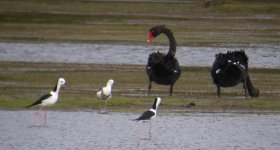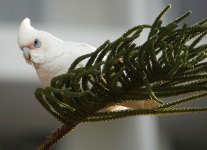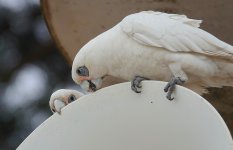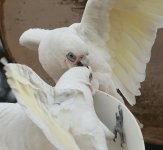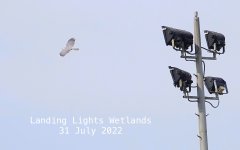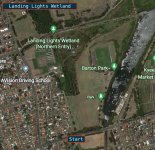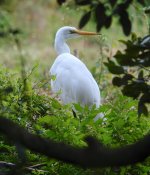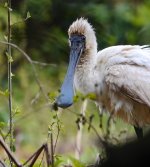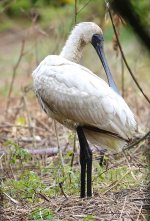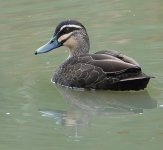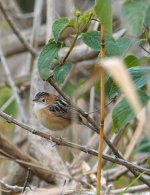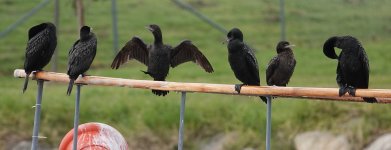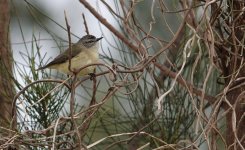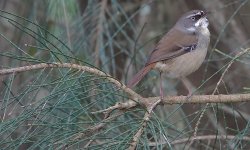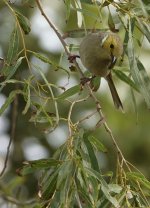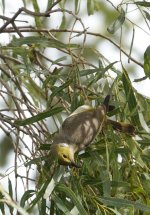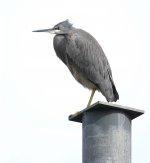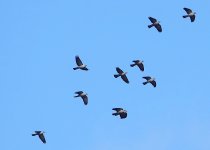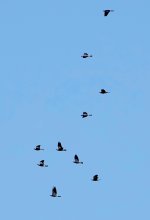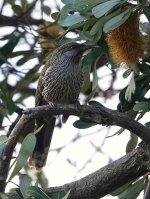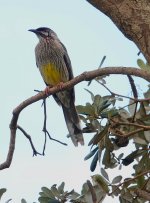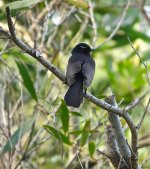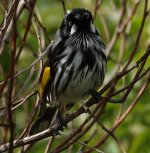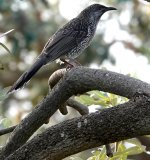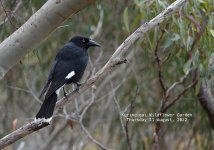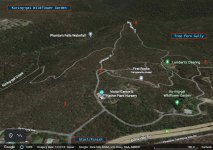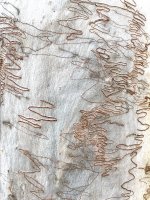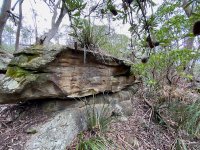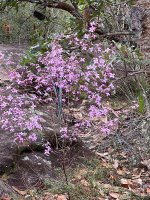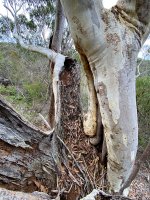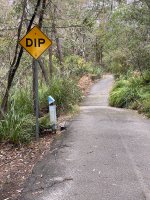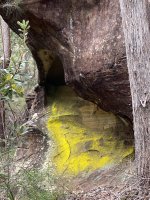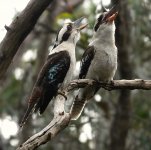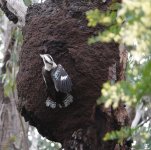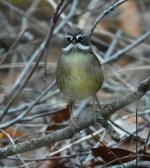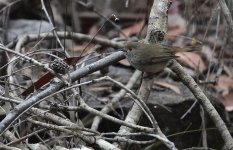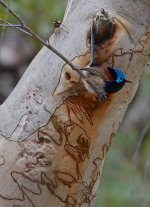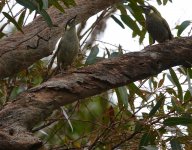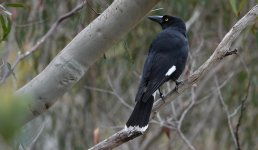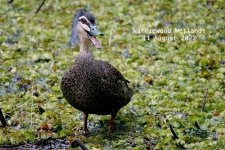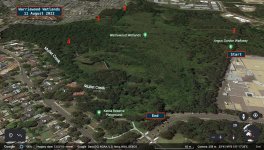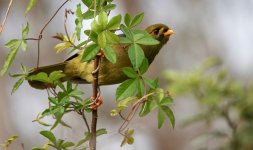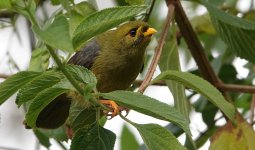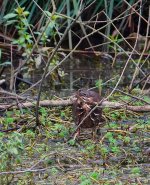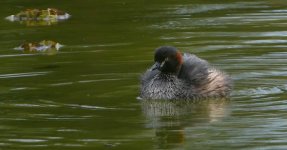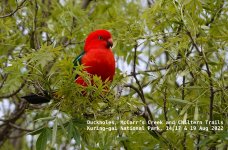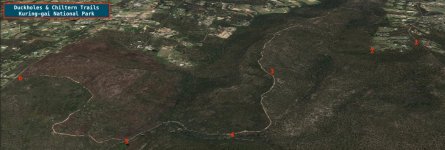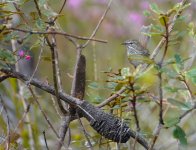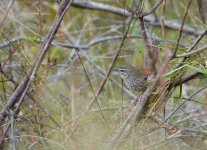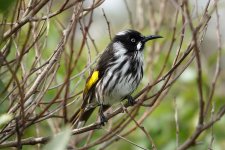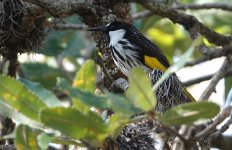You're not wrong there Jos!
There were plenty of good birds over my three visits to what is a terrific stretch of a nice combination forest and tussock on a sandstone substrate that breaks through the surface to make an attractive and pretty accessible habitat. But even before walking the 2km to the start of the trail (1) I had a terrific pair of Australian King Parrots feeding at eye level in a residential garden rights by the row of shops. The title photo was not taken then, but is probably the male of that pair, which I saw in Terrey Hills on every visit. This shot was in fact my last bird before getting on the bus at the end of my third visit - right before a five minute hailstorm struck, dropping hailstones the size of orange seeds and telling me very firmly to head home!
The trail starts from the the road north out of town,(1) looping east around some very large properties where a small pond held a pair of
Maned Duck and a single
Dusky Moorhen, while the open paddocks and fringes held
Australian Brush Turkey, Australian Magpie, a pair of
Laughing Kookaburras , a
Grey Butcherbird and three or four
Noisy Miners. White-browed Scrubwrens,
Superb and
Variegated Fairy Wrens and a couple of vocal
Eastern Whipbirds hid in the ferns under the large
Sydney Redgums, where sadly no Powerful Owl squatted bulky and menacing on a branch, but I live in hope on the basis of the pellet I found by the stream.
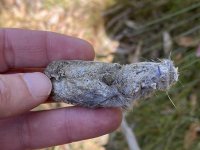
This same stand extends down to the beginning of the unmarked McCarrs Creek Trail (2) below the aptly named Coal and Candle Rural Fire Station, where the richer vegetation around the creek held the first ultra elegant
Eastern Spinebills zipping shrilly around at high speed, white tails flashing before stopping suddenly to display a box cutter sharp suit of ochre white and black behind the slender decurved bill, plus an
Eastern Yellow Robin, Grey Fantail, Brown Thornbills, and a cracking pair of
Golden Whistlers.
From here I followed the poorly defined trail, but very across the valley to the point it reconnected with the Duckholes Trail (3). While the trail was poorly defined and hard to follow as it passed through this more open area of rock ledges, boggy grassland and wider-spread eucalypts and wattles it was marked very accurately on Google Maps; and as there was good reception throughout the valley I was able to correct myself and navigate safely across this lovely area that was filled with half-burned scribblybarks, spike-ball grasses and a fine range of flowering plants. The dominant birds were the
Little Wattlebirds and
Striated Thornbills, but they also consistently held a couple of pairs of two of my top targets -
White-eared and
White-cheeked Honeyeaters. The former behaves rather like an Asian laughingthrush - and the white-cheek in a dark head and the "bow wow" call was highly evocative of Black-throated Laughingthrushes from my old Lantau and
Ng Tung Chai patches in Hong Kong.
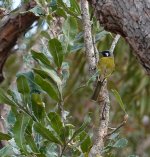
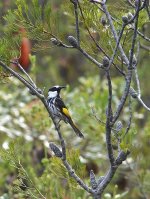
More to come ...






